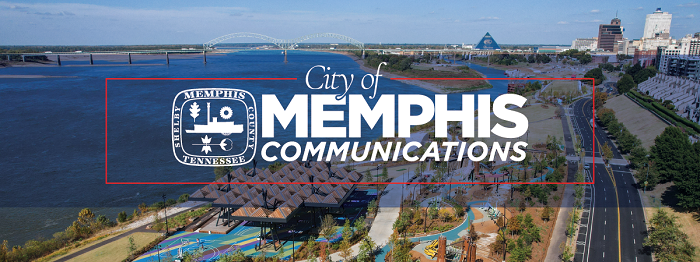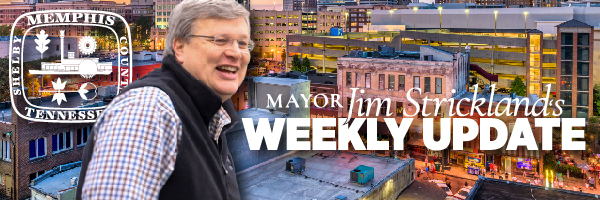Weekly Update
Memphis sent this bulletin at 09/03/2021 02:34 PM CDTFriends,
Today, I want to talk about something that for most folks is going to be a little wonky, and unless you’ve worked in government or the nonprofit world, you’ve probably never heard of the program—Community Development Block Grants (CDBG).
Here’s a little background info:
The Community Development Block Grant (CDBG) Program (through the U.S. Department of Housing and Urban Development) provides annual grants on a formula basis to states, cities, and counties. These grants help to develop viable urban communities by providing decent housing and a suitable living environment by expanding economic opportunities for low and moderate-income people.
As you will see below, there is a glaring disparity in the amount Memphis receives compared to similarly situated cities. This information was presented by former director of Housing and Community Development, Paul Young, last November to the National League of Cities.

Formula A grantees typically receive less funding than Formula B grantees because the
measures for “people in poverty” and “population” are shared among communities in
both formulas, but “growth lag” and “pre-1940’s housing” are specific to Formula B
grantees and are not necessarily tied to economic need.
Needy communities mostly demolished pre-1940 housing while more affluent communities renovated their housing stock; therefore, many high need communities do not qualify for this formula.
Additionally, growth lag does not represent a community in need. Most 1960’s communities are built out and will experience low or slightly declining growth when compared to the national average. This is due to intentional development restrictions in some areas, a lack of available land, or a decrease in household size. Most of these communities are economically doing well.
To further demonstrate these points is another chart listing the 2018 poverty rates and growth lag (or gain) since 1940.

As you can see, Memphis is woefully underfunded based on the antiquated funding formula and the allocation we receive from the CDBG program.
To add further insult to injury, the recent American Rescue Plan funds that the City of Memphis recently received were based off the same CDBG funding formula adding to that disparity.

One solution to correcting problems that result from HUD’s CDBG dual formulas is to adopt a single formula that targets funding to need. Todd Richardson, a Policy Development Researcher for HUD, developed a set of alternatives for HUD in 2005. One of the proposed alternatives, accurately targets funds to needs based on HUD’s current CDBG goals. Under this alternative, four new measures would determine CDBG allocations:
- Poverty rate per person in families and elderly households—weight (50%)
- Female headed households with children under 18—weight (10%)
- Pre-1950 housing occupied by a poverty household—weight (30%)
- Overcrowded housing units (more than 1.01 persons per room)—weight (10%)
Last September, Congressman Steve Cohen introduced H.R. 8416 Community
Development Block Grant Equity Act of 2020. This bill proposed the above-mentioned formula alternative #3 from the 2005 HUD study. HUD is also being asked to update the 2005 study to demonstrate the impact of the formula revision to participating jurisdictions (PJ).
To reduce negative impacts on Formula B cities, the Congressman proposed a significant increase to the CDBG allocation so that no PJ receives less than their previous five-year average allocation.
In May of this year, Congressman Cohen submitted the language to have the CDBG allocation study updated to the House Appropriations Committee.
Additionally, Congressman David Kustoff and his staff have been working with us to solve this complex issue.
Thanks to both Congressmen and their staffs for this work. As we move forward, I will be sure to keep you informed of any progress we make on this important issue.
New Era of Public Service: Last week, I talked about our challenges with workforce. This week, I want to let you what we’re doing to try and fill those vacant positions.
Recently, our marketing team created a new City of Memphis jobs newsletter (with a social media campaign) to advertise current openings as well as a series of job fairs to ramp up our recruiting efforts. Both initiatives are designed to not only help fill vacancies throughout city government, but also showcase the great work of each division. The jobs newsletter and the first fair will begin next week. Below is our current job fair schedule:
City of Memphis Job Fairs 2021
|
Date |
Location |
Time |
|
Thursday, September 9, 2021 |
Ben Hooks Library |
1:00 pm – 6:00 pm |
|
Thursday, September 16, 2021 |
Hickory Hill Community Center |
12:00 pm – 6:00 pm |
|
Thursday, September 23, 2021 |
Bert Ferguson Community Center |
12:00 pm – 6:00 pm |
Here's a direct link to the newsletter where interested folks can view, subscribe, share on social media, and view past content.
Here's a link directly to our subscription form, and here's the number to text for individuals who are interested in subscribing to the newsletter and viewing our jobs—Text Work901 to 484848.
The official end of summer: As we move into the holiday weekend, I hope you take the time to enjoy your family and friends. If you’re traveling, please be safe. And, remember, solid waste services will shift one day next week—meaning if your normal pick-up day is Monday, it will slide to Tuesday.
Enjoy your weekend!
Yours,



